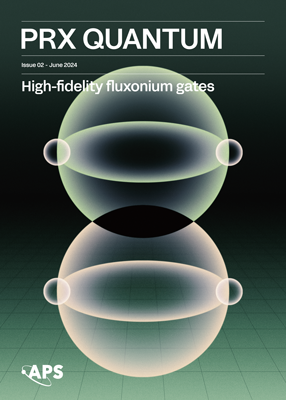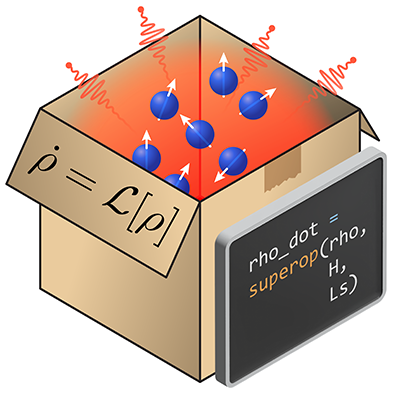ON THE COVER
May 2, 2024
High-fidelity two-qubit gates are achieved with heavy-fluxonium qubits, circuits that break many conventional superconducting circuit paradigms, bringing more diversity for quantum applications.
Helin Zhang et al.
PRX Quantum 5, 020326 (2024)
PERSPECTIVE
As quantum computing transitions into the fault-tolerant regime, understanding how best to utilize available architectures becomes paramount.
Amara Katabarwa, Katerina Gratsea, Athena Caesura, and Peter D. Johnson
PRX Quantum 5, 020101 (2024)
TUTORIAL
A pedagogical hands-on guide to quantum master equations and their numerical implementations, tailored to newcomers interested in interdisciplinary research.
Francesco Campaioli, Jared H. Cole, and Harini Hapuarachchi
PRX Quantum 5, 020202 (2024)
NEW ARTICLE
The class of functions that can be used in quantum signal processing is expanded, providing new tools for quantum algorithm development.
Danial Motlagh and Nathan Wiebe
PRX Quantum 5, 020368 (2024)
NEW ARTICLE
A statistical learning theory, based on empirical risk minimization and a generalization of shadow tomography, is developed for learning processes that map a classical input to a quantum output.
Marco Fanizza, Yihui Quek, and Matteo Rosati
PRX Quantum 5, 020367 (2024)
NEW ARTICLE
Measurement-driven control can optimally use the Zeno effect to realize robust and rapid quantum state transfer.
Philippe Lewalle, Yipei Zhang, and K. Birgitta Whaley
PRX Quantum 5, 020366 (2024)
NEW ARTICLE
Novel results show that many-body scars are suitable for adiabatic evolution despite the absence of energy gaps.
Hadi Yarloo, Hua-Chen Zhang, and Anne E. B. Nielsen
PRX Quantum 5, 020365 (2024)
NEW ARTICLE
A machine-learning approach to readout of general quantum systems improves real-time processing of measurement data by adapting to complex quantum noise conditions.
Saeed A. Khan et al.
PRX Quantum 5, 020364 (2024)
NEW ARTICLE
Enhanced scalability in Yb atom qubit arrays can be achieved by connecting neutral-atom quantum computer modules with high-fidelity entanglement at rates approaching 10 Bell pairs per second.
Yiyi Li and Jeff D. Thompson
PRX Quantum 5, 020363 (2024)














